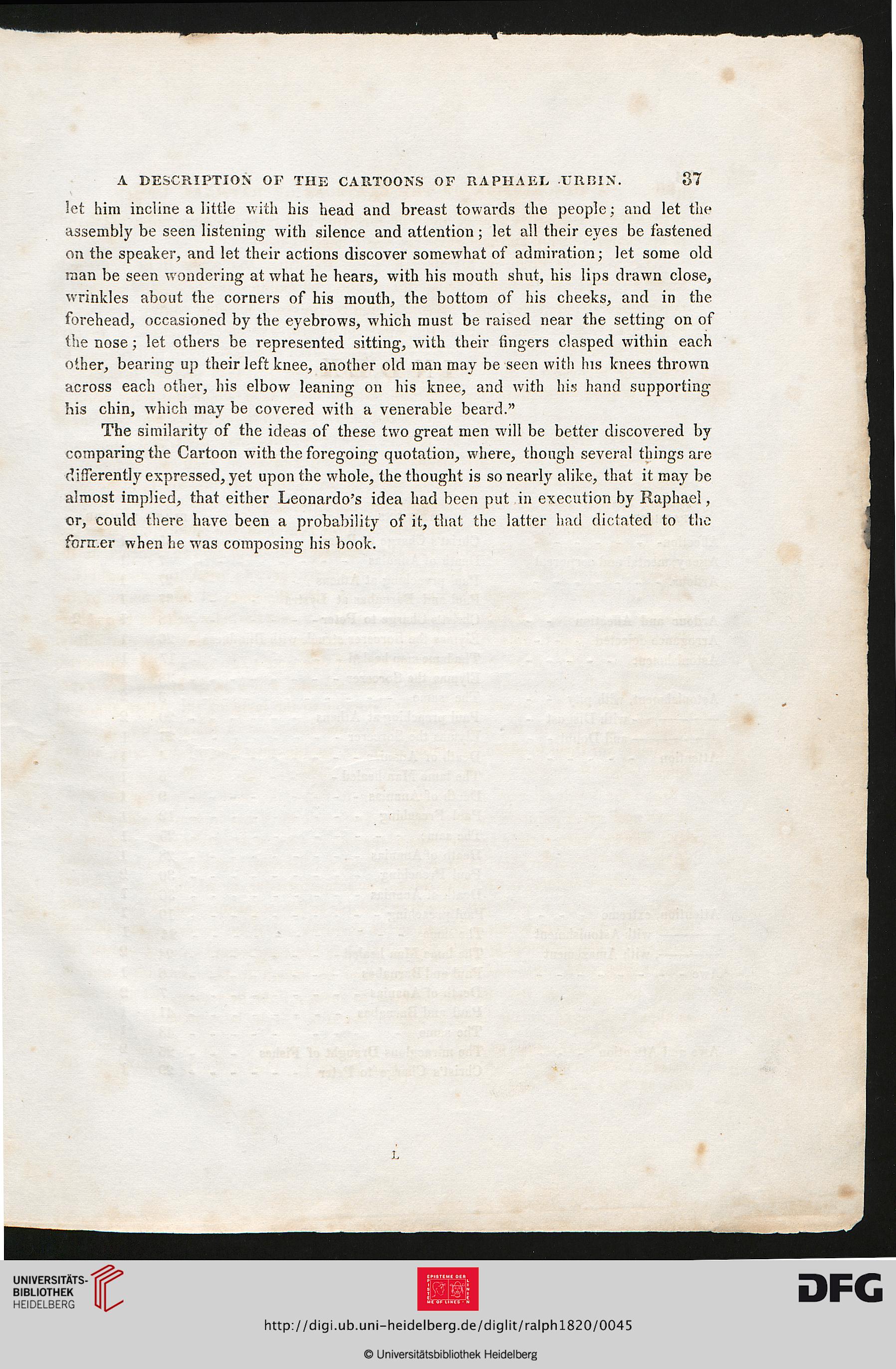A DESCRIPTION OF THE CARTOONS OF RAPHAEL TJRBIN. 37
let him incline a little with his head and breast towards the people; and let the
assembly be seen listening with silence and attention ; let all their eyes be fastened
on the speaker, and let their actions discover somewhat of admiration; let some old
man be seen wondering at what he hears, with his mouth shut, his lips drawn close,
wrinkles about the corners of his mouth, the bottom of his cheeks, and in the
forehead, occasioned by the eyebrows, which must be raised near the setting on of
the nose; let others be represented sitting, with their fingers clasped within each
other, bearing up their left knee, another old man may be seen with his knees thrown
across each other, his elbow leaning on his knee, and with his hand supporting
his chin, which may be covered with a venerable beard."
The similarity of the ideas of these two great men will be better discovered by
comparing the Cartoon with the foregoing quotation, where, though several things are
differently expressed, yet upon the whole, the thought is so nearly alike, that it may be
almost implied, that either Leonardo's idea had been put in execution by Raphael,
or, could there have been a probability of it, that the latter had dictated to the
fora.er when he was composing his book.
L
let him incline a little with his head and breast towards the people; and let the
assembly be seen listening with silence and attention ; let all their eyes be fastened
on the speaker, and let their actions discover somewhat of admiration; let some old
man be seen wondering at what he hears, with his mouth shut, his lips drawn close,
wrinkles about the corners of his mouth, the bottom of his cheeks, and in the
forehead, occasioned by the eyebrows, which must be raised near the setting on of
the nose; let others be represented sitting, with their fingers clasped within each
other, bearing up their left knee, another old man may be seen with his knees thrown
across each other, his elbow leaning on his knee, and with his hand supporting
his chin, which may be covered with a venerable beard."
The similarity of the ideas of these two great men will be better discovered by
comparing the Cartoon with the foregoing quotation, where, though several things are
differently expressed, yet upon the whole, the thought is so nearly alike, that it may be
almost implied, that either Leonardo's idea had been put in execution by Raphael,
or, could there have been a probability of it, that the latter had dictated to the
fora.er when he was composing his book.
L




